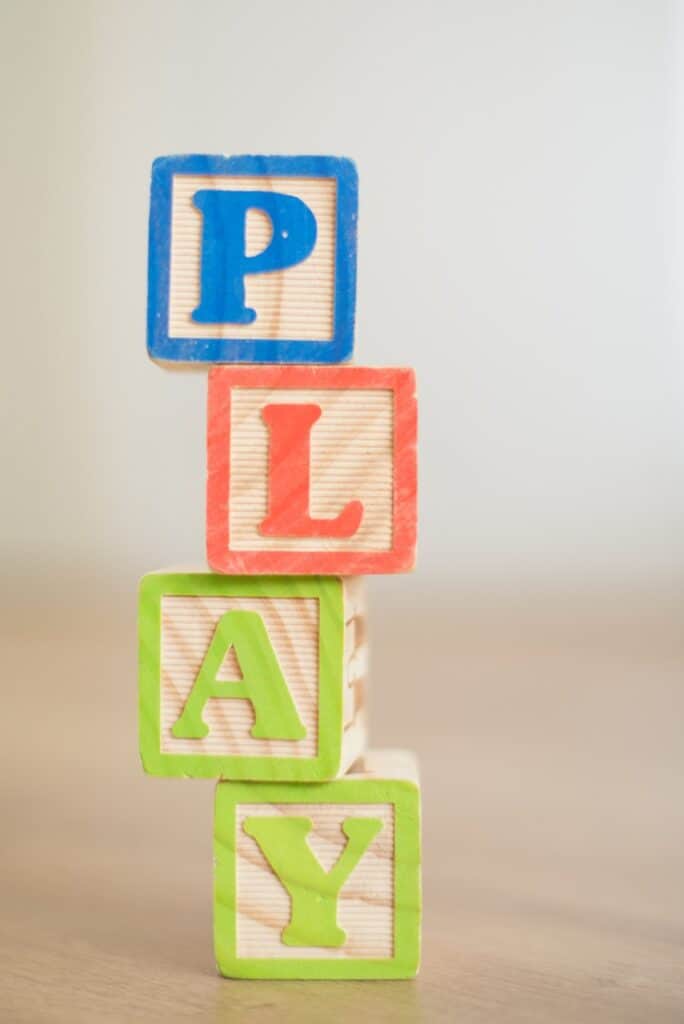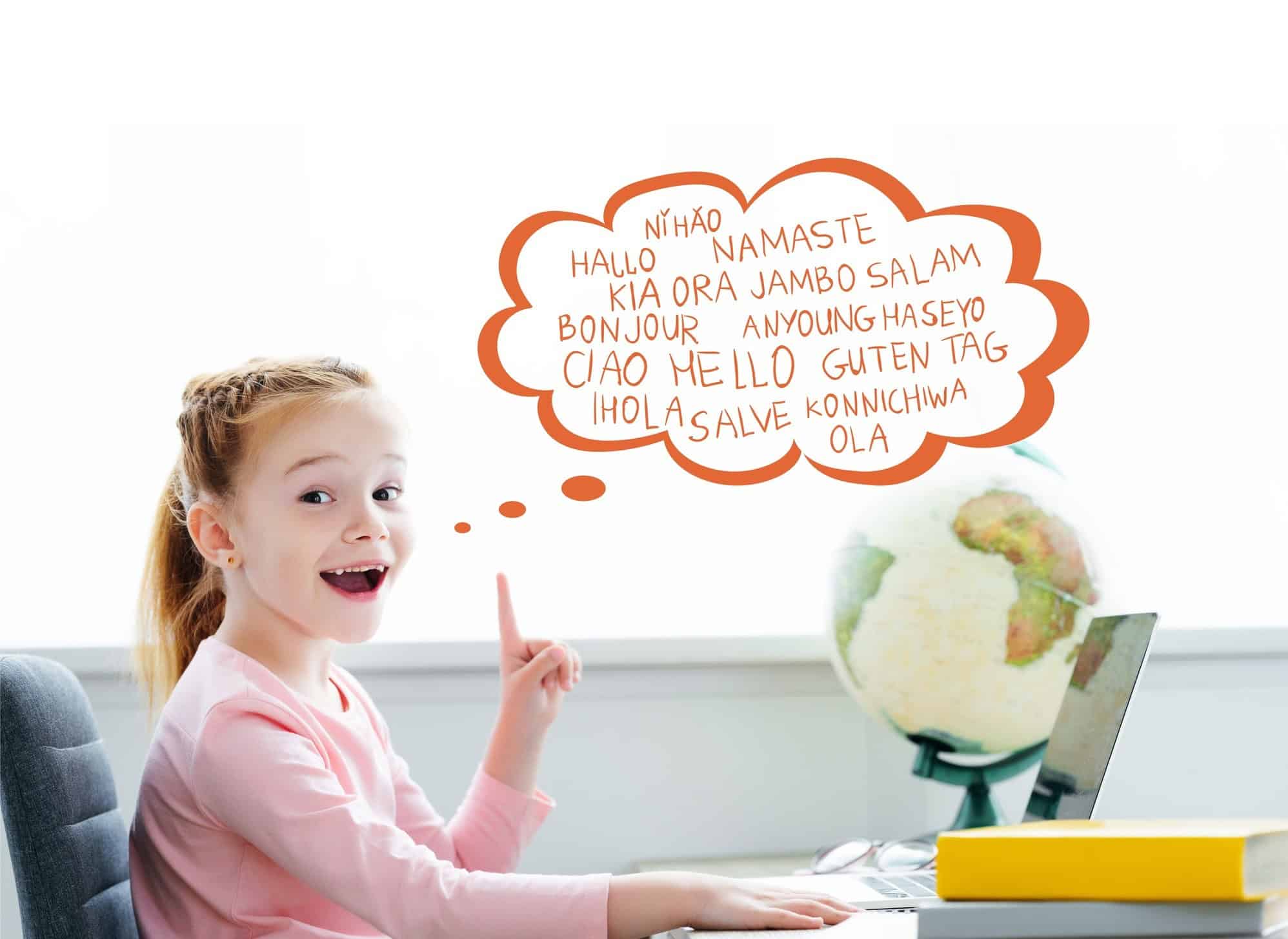Raising Multilingual Kids: Effective Tips for a Bilingual Household
Raising multilingual kids is a gratifying and exciting undertaking that provides numerous cognitive, cultural, social and economic benefits. However, it may also come with its challenges and setbacks. In a world that increasingly values communication, understanding different cultures, and being able to connect with others – it’s a valuable gift you can give your child….
Raising multilingual kids is a gratifying and exciting undertaking that provides numerous cognitive, cultural, social and economic benefits. However, it may also come with its challenges and setbacks. In a world that increasingly values communication, understanding different cultures, and being able to connect with others – it’s a valuable gift you can give your child.
It’s essential to understand the foundations of multilingual upbringing, practical strategies, and the tools necessary to support your child’s language acquisition journey. By fostering a strong cultural identity and addressing the inevitable challenges, you can set your child up for linguistic versatility and global connectivity.
Key Takeaways
- Cultivating multilingualism provides cognitive, cultural, and economic advantages to children.
- Familiarity with foundations, strategies, and tools is essential for a successful multilingual upbringing.
- Nurturing cultural identity and managing challenges are key aspects of raising multilingual kids.
Here’s How We Do It In Our Family
We live in France; my husband is Italian and I am Ukrainian, with Russian as my mother tongue. I speak Russian to our daughter, and my husband speaks Italian to her. Between us, we communicate in English. At school, she is learning and beginning to speak French.
Our daughter started forming sentences around the age of 2.5 years. While traveling to Italy, we were surrounded by many relatives, so she was exposed to a lot of Italian. Almost from day one of our trip, she began communicating with everyone in Italian. Shortly afterward, my sister and her son, along with our cousin, visited us in France. We all spoke a lot of Russian, and my daughter quickly picked up the Russian language, continuing to speak more and more. Initially around 2 years old, she only was saying a few words and indicating things or actions, but we were confident that she was understanding us well. We were sure that any speech delay might be due to the multilingual environment rather than her personal development.
At the age of 2 years and 10 months, she started attending a French school. Initially, she was shy and obviously couldn’t understand much. However, after a full year, her teachers reported that she understood 90% of what was taught, followed all instructions, and began communicating in French with her teachers and classmates. At home, she sometimes uses French words and sings many French songs that they listen to in school.
Since she started speaking, she has always chosen the correct language for each of us. For example, I might tell her something in Russian and ask her to relay it to her father. She goes to him and speaks in Italian. As we speak English at home and with some of our friends, she was also picking up English. We showed her YouTube shows and cartoons in English. At one point, we realized she understood our conversations in English, so we began speaking to her in English occasionally and receiving responses. Now, I read her books in English and Russian.
I appreciate that she understands there are different languages and that she uses a specific language to communicate with different people.
Foundations of Multilingual Upbringing
What impacts children’s language development?
Several factors can impact children’s multilingual development: the quality and amount of linguistic input, the environment, and the child’s motivation. Parents play a crucial role in providing input in two or more languages at home. This input should be different from the environment language(s) and can also include exposure to bilingual communities or having at least one additional home language (Cambridge Handbook of Childhood Multilingualism).
Language Development Milestones
There are some typical milestones in children’s language development. While each child is different, the major milestones can be:
- 12-18 months: first words, single language mixing.
- 18-24 months: combining two-word phrases, understanding complex sentences.
- 2-3 years: vocabulary explosion, simple grammar rules, beginning to code-switch.
- 3-6 years: refining syntax, improving pronunciation, and enhancing pragmatic skills.
Keep in mind that these stages may vary in multilingual settings, but maintaining a consistent approach to each language can help your child achieve better outcomes.
Choosing Languages for Your Child
When deciding which languages to introduce to your child, consider the following:
- Your family’s linguistic background: evaluate your own language skills and the languages spoken in your family and community.
- Cultural connections: consider the importance of cultural connections and family history when selecting a language.
- Future opportunities: think about the potential benefits an additional language may provide, such as enhanced cognitive skills, better social connections, or career prospects.
What Does It Mean to Be Multilingual?
Being multilingual means you have the ability to communicate effectively in more than two languages, whether it involves speaking, writing, or understanding. Some people become multilingual from birth, naturally acquiring languages in a multilingual family environment. Others may add new languages throughout their lives through study and practice.
Personal Background
I grew up speaking Russian until I started learning Ukrainian at school. Despite primarily speaking Russian, exposure to Ukrainian through school, TV, and university made me proficient in understanding, reading, writing, and speaking Ukrainian. Even without constant use, my Ukrainian skills have remained intact—I just need a bit more time to recall the right words sometimes.
English was a different story. I never thought I’d speak it fluently. Yet, after years of using it daily—talking with my husband, watching movies, and consuming news—I’ve become quite fluent, even though I’ve never taken an official language test.
Living with my Italian-speaking husband has also helped me pick up Italian effortlessly. After five years, I understand most of what he says to our daughter, and I can handle everyday conversations. However, I can’t write in Italian, and reading is a challenge since it’s different from listening.
Now, we’re in France, a place I never expected to live, and initially, I wasn’t fond of French. The first year was tough as I struggled to understand the spoken language, and since many services were available in English, my progress was slow. Yet, I’ve managed to learn enough to handle phone calls, some bureaucracy, and even take my driving test in French. It’s a long journey, but I’m on my way to becoming a quintilingual speaker.
Raising A Multilingual Child: The Benefits
When my husband and I decided to start a family, we knew right away we’d raise our kids to be multilingual. There are so many benefits to this approach—let’s dive into why it’s a great idea.
Much Easier to Learn a Language as a Child
One of the many perks of being a parent is observing your child’s rapid learning process. For multilingual children, this process is even more remarkable! It’s much easier for kids to learn a language during their early developmental stages, compared to adults. This is because younger minds are more receptive to new sounds, which accelerates their language acquisition. If you’ve ever desired for your child to be fluent in multiple languages, now is the best time to start!
Developmental Psychology
Multilingual children have an advantage when it comes to cognitive development. The act of learning multiple languages has been linked to an improvement in literacy and other language skills. Additionally, multilingualism can even improve their memory, problem-solving abilities, and creativity. These benefits can have a significant impact on their overall education and self-confidence throughout their lives.
Here are a few cognitive benefits of multilingualism:
- Better attention and focus
- Enhanced memory capacity
- Improved multitasking abilities
- Earlier awareness of other people’s perspectives and points of view
- Adapting to changing circumstances
Job and Travel Opportunities
Raising a multilingual child not only helps them develop better cognitive and interpersonal skills, but it also opens up a world of job and travel opportunities in the future. Your child’s ability to engage with different cultures and their incredible language skills will be considered a valuable asset in various industries. Moreover, being multilingual will make it easier for your child to pursue educational and international job experiences, allowing them to experience the incredible diversity of our world firsthand.
Embrace the beautiful gift of language and watch your child flourish!
Raising A Multilingual Child: The Disadvantages
Multilingual Children Start To Speak Later
It’s common for multilingual children to begin speaking a bit later than their monolingual peers. This happens because they are processing and learning multiple languages simultaneously, which can be more complex and time-consuming. However, it’s essential to remain patient and supportive during this period, as research has shown that multilingual children eventually catch up with monolingual children in language development.
Multilingual Children Are Going To Mix Their Words More Often
Another potential downside of raising a multilingual child is that they might mix words and phrases from different languages. This phenomenon, known as code-switching, may occur while your child is still learning and developing their language abilities. Code-switching, though, is considered a normal part of multilingual language development and generally decreases as your child becomes more proficient in each language.

Example: “I want agua instead of eau.”
- What it means: “I want water instead of water (in another language).”
Multilingual Children May Use A Certain Language As The Main And Refuse To Speak Another One
It’s not uncommon for multilingual children to develop a preference for one language over others, especially if that language is more dominant in their environment. This can lead to challenges when trying to encourage the use of other languages. Some tips for addressing this issue include:
- Consistency: Be consistent when speaking different languages at home. For example, one parent can speak one language, and the other parent can speak another.
- Language exposure: Provide opportunities for your child to hear and use other languages regularly, like attending language-based playgroups or watching age-appropriate media in those languages.
- Positive reinforcement: Praise your child when they speak the less dominant language, and encourage them to continue using it.
Practical Strategies for Multilingual Families
Start From The Very Early Age
It’s crucial to introduce your child to multiple languages as early as possible. Research shows that children can distinguish between languages from an early age. The earlier you start, the easier it will be for your child to pick up languages and develop their language skills.

OPOL (One Person, One Language) approach
The OPOL strategy is a popular method for raising multilingual children. In this approach, each parent (or caregiver) consistently speaks to the child in a different language. This provides clear language boundaries and helps your child to understand when and with whom to use each language.
MLAH, or Minority Language At Home approach
In the Minority Language At Home (MLAH) approach, the entire family speaks the minority language at home. This allows your child to develop a strong foundation in the minority language, while they learn the majority language through social interaction and schooling.
Creating a Language-Rich Environment
Exposure is essential for language learning. To create a language-rich environment, try the following:
- Surround your child with books, music, and TV shows in different languages
- Engage in conversations with native speakers of the target languages
- Attend multilingual playgroups and cultural events
Consistency and Language Rules
Establishing language rules and being consistent with them is important. Some families set rules such as, “We speak Spanish at home, and English outside.” This provides structure and makes it clear when and where each language should be used.
Incorporating Culture in Language Learning
Language learning is more engaging when it’s intertwined with the culture. Teach your child about the cultures associated with the languages by:
- Cooking traditional meals together
- Learning about holidays and customs
- Sharing personal experiences and family heritage
Play Games in Different Languages
Make language learning fun by incorporating games in different languages. Some ideas include:
- Bilingual board games
- Memory games with vocabulary cards
- Multilingual storytelling

Addressing Challenges and Setbacks
Overcoming Language Resistance
Sometimes, your child might show resistance to learning a new language. There could be a variety of reasons for this, such as feeling overwhelmed or confused. It’s important to identify the cause of their resistance and address it in a supportive and empathetic manner. Here are a few strategies to help your child overcome language resistance:
- Provide a supportive environment: Create a positive atmosphere by being patient and understanding. Encourage your child to express their feelings and concerns about learning multiple languages.
- Make learning fun: Incorporate games, music, and stories into language learning to keep it engaging and enjoyable.
- Gradual exposure: Introduce the new language in small steps rather than overwhelming them with too much information at once.
Achieving Fluency
Achieving fluency in multiple languages for a child exposed to them from birth requires significant parental effort. While conversing in your native language with your child is a great start, teaching them to read and write in that language often necessitates additional resources, especially if it’s not commonly spoken in your local schools. You may need to explore alternative educational options such as online courses, language schools, or extracurricular activities. Moreover, maintaining your child’s interest in these activities over time is crucial. Consistent engagement is key to helping them develop a well-rounded skill set in each language, including understanding, speaking, reading, and writing. Additionally, these children might have a smaller vocabulary in each language compared to their monolingual peers. This can sometimes make it harder for them to express themselves fully or understand others in any one language. Despite these hurdles, the long-term benefits of multilingualism often outweigh these initial obstacles.
Tools To Support Multilingual Learning
Finding Community Support
Raising a multilingual child can be challenging, but you don’t have to do it alone! Finding a supportive community is essential for you and your child. Look for local groups with families raising children with multiple languages, or join online forums to share experiences and advice. Another great option is to participate in dual language programs that help connect multilingual families.
Utilizing Technology and Media
Technology can be extremely helpful when it comes to language learning. Look for apps, games, and websites that support multilingual learning. Many software programs and apps are designed specifically for children to help with vocabulary and grammar. Also, don’t forget to use media in other languages, including movies, TV shows, and music, to expose your child to the sounds and structures of different languages.
Books and Educational Materials
Provide your child with a variety of books, magazines, and educational materials in multiple languages. Visit libraries, bookstores, or online platforms to find age-appropriate reading materials, games, and puzzles that can help develop their language skills. Additionally, consider using multilingual resources in your child’s education.
Bilingual Education and Schooling Options
Finally, explore bilingual or multilingual schools in your area, as they can provide a supportive environment for your child’s language development. Research suggests dual language education is optimal for young multilingual learners. These schools typically offer instruction in one or more languages, giving your child the opportunity to develop strong skills in multiple languages while also excelling academically.
Maintaining Your Child’s Cultural Identity
Raising multilingual children offers several benefits, including the preservation of their cultural identity. You may be wondering how best to achieve this balance while raising your child in a multicultural environment. Here, we will explore some practical tips to accomplish this objective.
First off, exposing your child to their heritage language plays a vital role in preserving their cultural identity. By teaching your child multiple languages, they can improve communication and bonds within the family and develop a strong sense of belonging. Plus, engaging your child in conversations, stories, and songs in their heritage language becomes an enjoyable family bonding activity.
To help your child gain more familiarity with their culture, make it a point to celebrate your family’s traditional customs and holidays. Whether it’s preparing special dishes or decorating the house, involving your children in these activities can foster pride in their cultural background. Remember, making these occasions fun and educational can create lasting positive associations with their heritage.
Another crucial aspect is to provide your child with opportunities to interact with native speakers and participate in cultural activities. You can join or create local groups with families from a similar background or take your children to visit the country of their heritage when possible. This exposure can help them better understand the language, customs, and history associated with their cultural identity.
Finally, don’t forget that books, movies, and television programs can be invaluable in introducing your child to their culture. Choose age-appropriate content that showcases your heritage’s history, folklore, art, and music. A combination of language-learning platforms and culturally-rich media can enhance their multilingualism and appreciation for their roots.
In conclusion, nurturing a child’s cultural identity is a rewarding endeavor. By actively involving them in language learning, traditional celebrations, cultural exposure, and carefully selected media, you can provide your child with a strong foundation that encompasses the best of their multicultural upbringing.
In Summary: More Than One Language – An Investment For Life
Raising children in a multilingual household offers a plethora of benefits, not only enhancing cognitive skills but also providing cultural enrichment and greater adaptability in a globalized world. For families embarking on the multilingual journey, here are several effective strategies to nurture bilingualism in your home:

- Consistency is Key: Stick to a consistent language strategy.
- Engage in Quality Interactions: Regular, meaningful communication in each language encourages deeper learning.
- Incorporate Culture: Celebrate cultural holidays, enjoy traditional meals, and share stories and read the books from each culture to make languages more relevant and engaging.
- Use Technology Wisely: Leverage educational apps, movies, and music in different languages.
- Be Patient and Supportive: Every child’s language development is unique. Encourage progress and celebrate milestones, no matter how small.
By integrating these practices, you can effectively foster a multilingual environment, offering your children invaluable skills and numerous opportunities that last a lifetime.
FAQs
What are effective strategies for raising a bilingual child in a monolingual home?
Consider introducing books, music, and movies in the second language and arranging playdates with native speakers. Enrolling your child in language classes or hiring a tutor can also provide structured learning. Set specific times at home to practice the new language to reinforce learning.
Are there particular benefits to children being bilingual that researchers agree on?
Yes, researchers agree that bilingual children often have enhanced cognitive flexibility, better problem-solving skills, and improved executive function. They also gain cultural awareness and have an easier time learning additional languages later in life.
What are some challenges of raising a multilingual child and how can they be overcome?
Balancing multiple languages can lead to mixing them up, but consistent practice and clear context for each language can help. Engage your child in activities that use different languages in varied settings.
How early should language learning be started with children for multilingual development?
The earlier, the better! Starting from infancy, even as newborns, helps children absorb languages more naturally and efficiently.
What are the best resources or books to help parents raise bilingual or multilingual children?
“Raising a Bilingual Child” by Barbara Zurer Pearson is a great start. Also, “The Bilingual Edge” by Kendall King and Alison Mackey offers practical advice and strategies.
Is it possible for a child to learn and fluently speak multiple languages from infancy?
Yes, children can learn and fluently speak multiple languages from infancy if they are consistently exposed to each language in meaningful contexts.
Does learning a new language make children forget their native language?
Not usually, but it’s important to maintain a balance. Consistent use and exposure to the native language are key to preventing attrition.
Subscribe to Babyhood And Beyond!
Get updates on the latest posts and more from Babyhood And Beyond straight to your inbox
Or let’s get in touch
To ask us any question, please go to contact us page.




